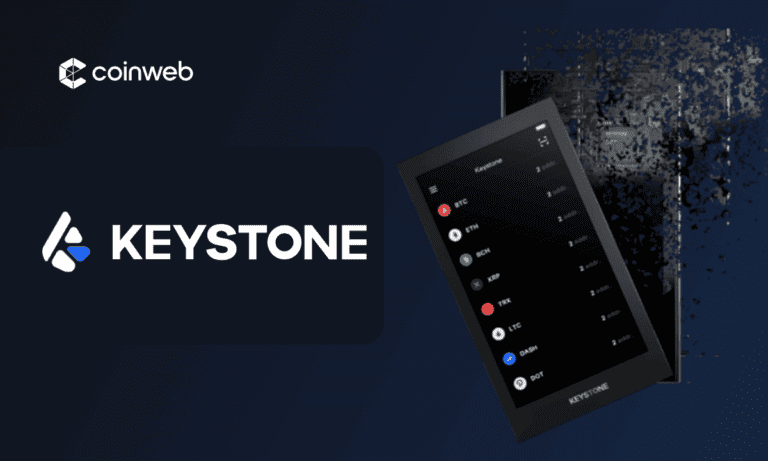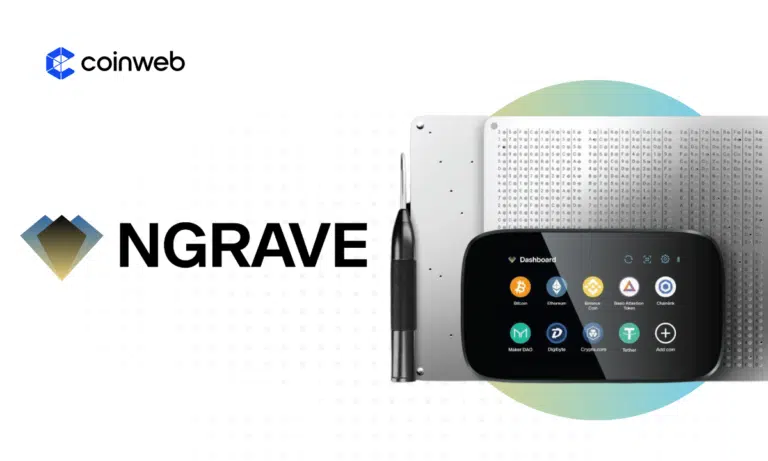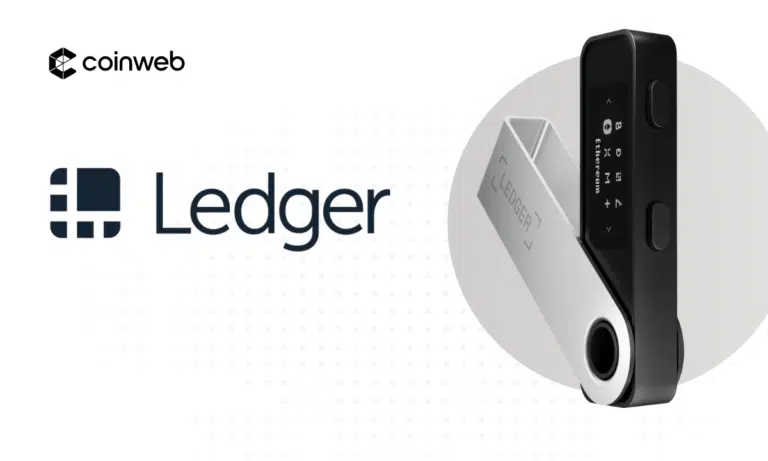Keystone Wallet Review 2024: Is it the Safest Cold Wallet?
TL;DR
In this Keystone review, I’ll put this hardware wallet to the test and explore its good and bad to help you make the best decision.
For $129, storing my assets with an extra layer of security was reassuring compared to any software wallet. My favorite thing about the wallet is its 4.0-inch touchscreen, fingerprint sensor, and built-in camera for QR code scanning, making it user-friendly.
To fit the needs of new users and experts, Keystone supports 5,500+ cryptocurrencies across 200+ blockchains, making it an all-one solution for your Web3 investments.
Its integration with MetaMask and 20+ software wallets was impressive. Features like a detachable battery, self-destruct mechanism, multi-coin firmware, and multi-sig support further enhance its appeal.
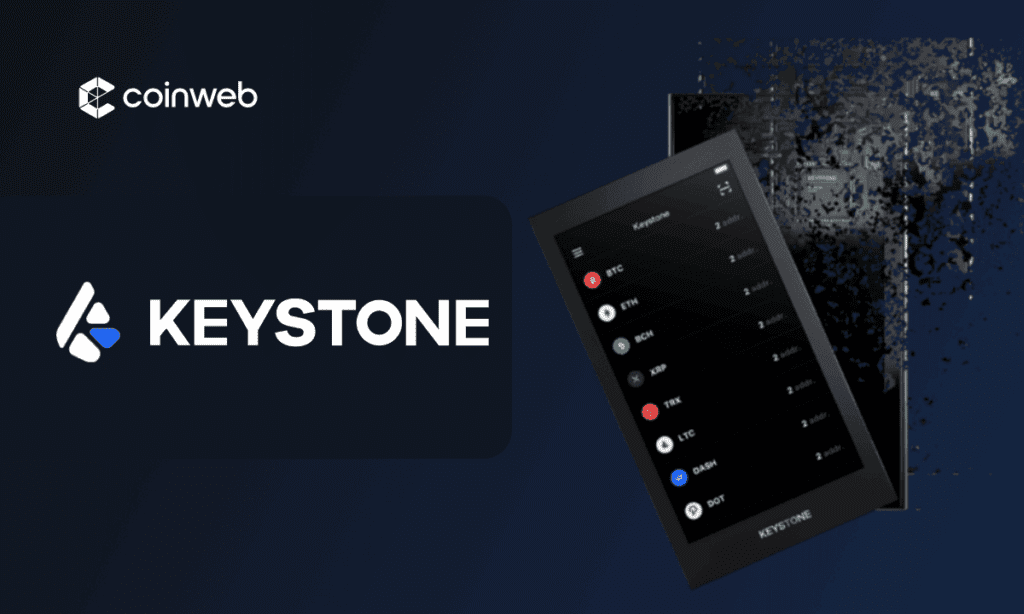
Keystone Wallet at Glance
| Attribute | Information |
|---|---|
| Coinwebs rating | ⭐⭐⭐⭐ (4.4 stars) |
| Launched In | 2021 |
| Founders | Lixin Liu |
| Supported Cryptocurrencies | 5500+ Coins |
| Supported Wallets & Blockchains | 45+ |
| Price | $129 |
| Top Features | Air-gapped, Robust Design, 4-Inch Screen, Camera, Fingerprint |
| Security | Self-Destruction Mechanism, Dice Entropy, PSBT Support |
What is Keystone Wallet?
The Keystone Wallet is a hardware wallet used for storing cryptocurrencies, with you having full control over your assets.
Introduced in June 2021, It was founded by Lixin Liu.
Lixin, formerly at the helm of hardware development at Cobo, spearheaded a core team’s departure from Cobo to create the Keystone Wallet—a refined iteration of the Cobo Vault.
Who’s it for?
Here is who we think should use it:
New Crypto Users: If you are starting your crypto journey, the security of your investment must be the top priority, and Keystone Wallet offers that. Compared to a traditional centralized wallet, it stores your money in cold storage, protecting it from hacks.
Plus, the minimal design and touch screen makes it easy to navigate different features of this wallet compared to its competitors, like the Ledger Nano X, which can be quite complicated.
Pro DeFi and Crypto investors: Are you a seasoned crypto and DeFi? If yes, you must juggle around with different wallets and blockchains.
Well, that’s exactly what makes Keystone a great choice for you. It is compatible with 20+ wallets like MetaMask and supports thousands of crypto tokens. Also, you can explore dApps and go into the DeFi rabbit hole.
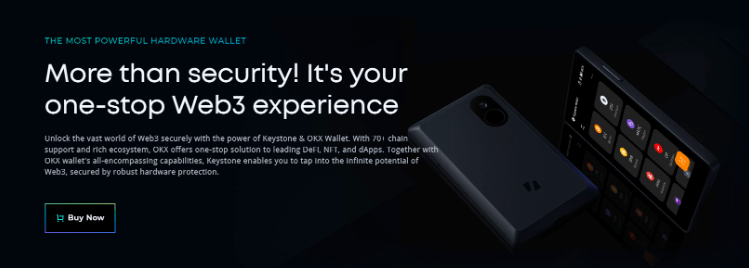
What are the advantages of Keystone Wallet?
Let’s explore the advantages:
Robust design
When I held this hardware wallet, its robust design stood out. Not only does it look eye-catching, but it is constructed to last longer.
Its 4-inch large touchscreen and rechargeable battery sets it apart, making it exceptionally user-friendly. The built-in camera works as a QR scanner without USB or Bluetooth, enhancing convenience and security.
Plus, the rear-mounted fingerprint scanner offers secure biometric access.
With two battery options and the ability to update firmware offline, this wallet is a rugged and durable choice, ultimately providing a remarkable user experience.
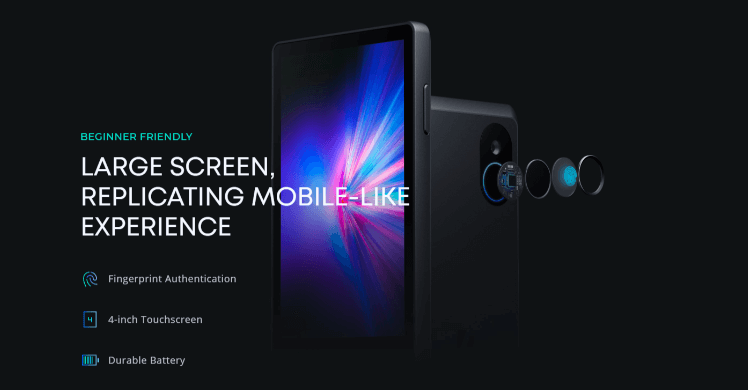
100% air-gapped wallet
When using the Keystone wallet, I liked that it functions as a totally offline wallet, making it 100% air-gapped. It means no Bluetooth or anything.
This innovative feature keeps hackers at bay by disconnecting the wallet from USB and Bluetooth connections.
Instead, it uses QR codes for communication between your mobile device and the wallet, using its built-in camera.
This air-gapped design offers unparalleled protection for your cryptocurrency investments.
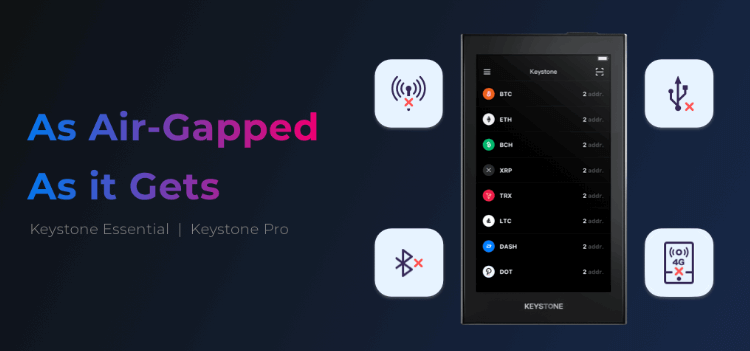
Supports Web3 apps
If you’re an investor in DeFi like me, you’ll appreciate Keystone’s full support for Web3 dApps, making it a standout choice in the world of hardware wallets.
I can confidently vouch for Keystone as the sole hardware wallet that syncs with the MetaMask wallet through the browser extension or the mobile app.
Keystone’s firmware is designed to be compatible with various blockchain networks beyond Ethereum Virtual Machine (EVM) chains.

Diverse crypto and blockchain support
With its compatibility extending to over 20+ software wallets, the Keystone wallet offers storage for over 5,500 coins and tokens across an extensive network of 200+ blockchain platforms.
While the number of supported cryptocurrencies may not match certain other hardware wallets like the Ellipal Titan, which supports 10,000+ assets, Keystone’s strength lies in its broad spectrum of blockchain networks and their associated dApps.
Here are some supported assets:
- Bitcoin
- Ethereum
- Tether
- Binance Coin
- Ripple
- Polygon
- Polkadot
- Litecoin
- Dogecoin
- Shiba Inu
- Bitcoin Cash
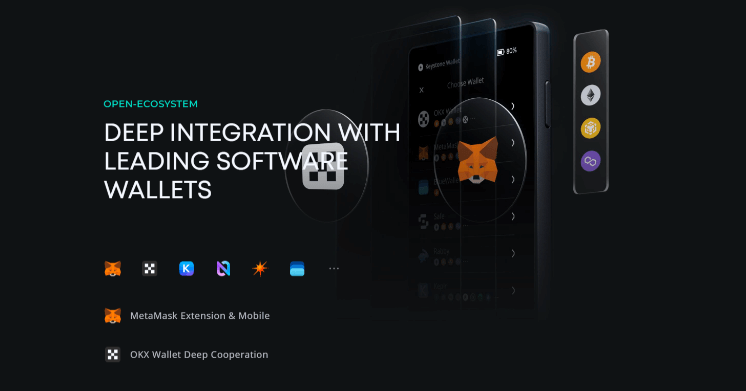
Dedicated mobile app
I found the Keystone mobile app handy for managing my digital assets and transactions. It’s great for storing assets, but unlike competitors, you can’t buy cryptocurrencies directly.
What I loved about it was the clean and user-friendly design. The main screen neatly shows all my stored cryptocurrencies, and adding more assets is simple. It’s all about simplicity and ease of use.
Clicking on a specific asset provided straightforward options for sending and receiving, simplifying cryptocurrency transactions.
Keystone’s features are exclusive to its iOS and Android mobile apps. To use them, I easily bound my Keystone wallet to my mobile device via a QR code during setup.
Robust Customer support
Keystone’s approach to customer support is unique. There’s no in-app support; instead, users are directed to the Keystone website for assistance.
Fortunately allowing users, the website hosts a thorough Help Center with detailed guides covering setup, firmware upgrades, transactions, address management, and third-party integrations.
For support, the website offers a live chat for real-time help and a service desk to raise hardware-related tickets.
While this may differ from other platforms, in my experience, Keystone’s support system proved effective and responsive.
How to buy a Keystone Wallet?
Follow these steps to order a Keystone wallet in a few minutes:
More details
The Keystone wallet is a must-have for those valuing digital asset safety. Its user-friendly features, offline storage, broad cryptocurrency support, and seamless software integration make it a standout choice. Priced at $129, this wallet is a cost-effective solution for all levels of crypto enthusiasts.
-
Large 4.0-inch touchscreen.
-
User-friendly with fingerprint and camera.
-
DeFi access via MetaMask.
-
Comfortable fiberglass build.
-
Offline private key storage.
-
Requires separate MicroSD cards.
-
Limited battery life.
-
No simultaneous use and charge.
-
Higher price compared to others.
Step 1: Visit the website
Start by visiting the Keystone website. Once there, tap [Buy].
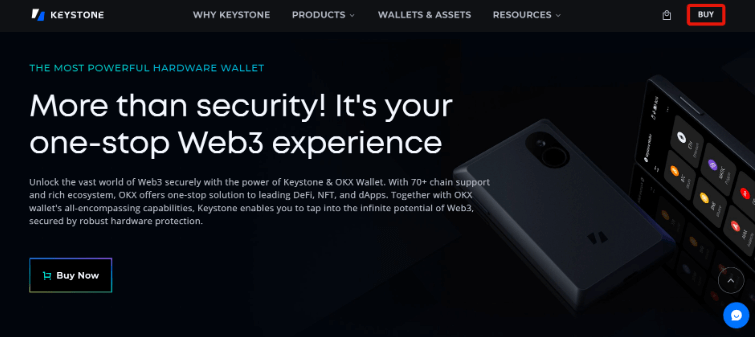
Step 2: Select the product
After that, select the product and tap [Cart].
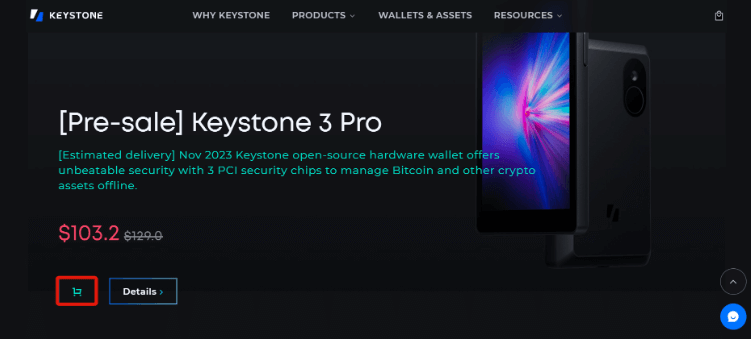
Step 3: Proceed for checkout
Then, you will be taken to the checkout pop-up. Select your country and tap [Checkout].

Step 4: Enter your details
Now, you will be asked to enter your details, including your e-mail address, home address, and phone number.
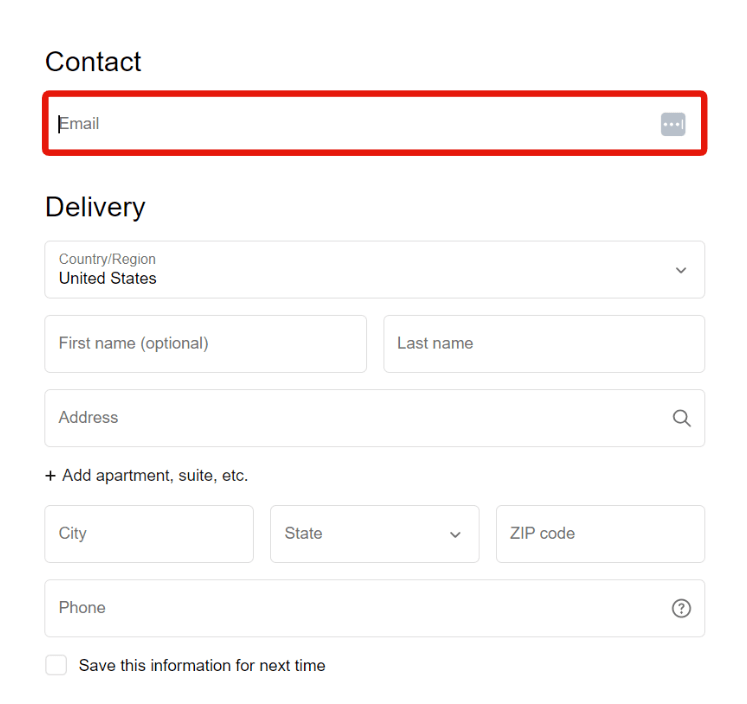
Step 5: Select a payment method
After that, select a shipping and payment method. For this review, we choose [Bitcoin].
When done, you will be taken to a new page where you complete the transaction details and payment. Once done, you only need to wait for the product to be delivered.
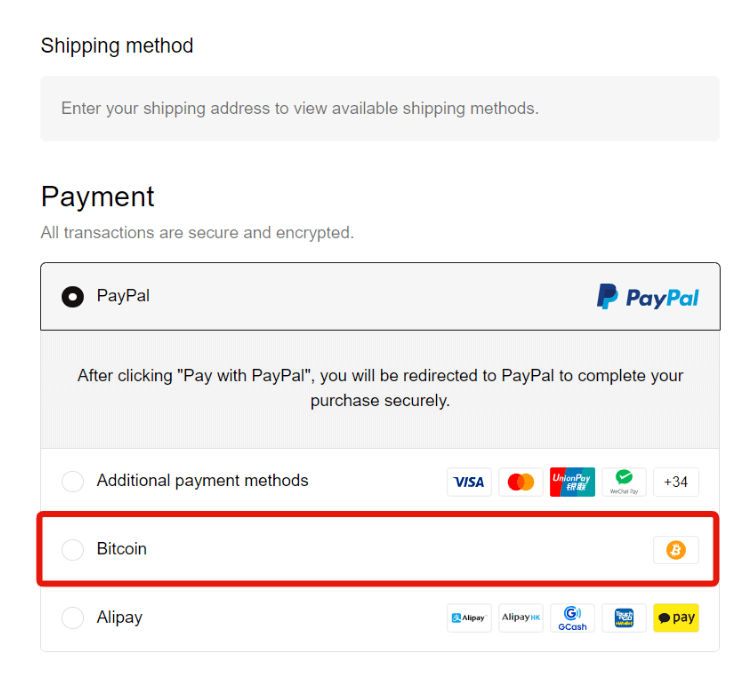
Keystone Wallet Review: Key security features
Here are some key security features of Keystone Wallet:
MicroSD Card Firmware Upgrading
In my experience, all it took was inserting the SD card into my computer, downloading the firmware upgrade, and then simply plugging it into my computer as the Keystone device to complete the process. It’s a hassle-free and secure way to keep your wallet up to date.
This nifty feature helps ensure that upgrading your Keystone wallet’s firmware doesn’t require any connection to the internet.
Fingerprint Authentication
Adding an extra layer of security, biometric fingerprint authentication is a welcome feature. This additional safeguard for my device was reassuring, making unauthorized access significantly more challenging.
Self-Destruct Mechanism
The self-destruct mechanism proved a lifesaver when someone with unauthorized access tried to brute force their way into my device. It’s like a fail-safe to protect your assets.
Web Authentication
This feature is a crucial step in ensuring the authenticity of your Keystone device during the supply chain.
I used it on the Keystone website, and it relies on QR codes to verify the legitimacy of your product. It’s a simple yet effective way to confirm you have the real deal in your hands.
Dice Entropy
The dice entropy feature offers an element of personalization. I could generate my unique recovery phrase by rolling a dice several times. This means my recovery phrase is something only I can know, adding an extra layer of security.
Multi-sig Support
Especially favored by institutional investors, multi-signature support means that transactions are only processed when a specific number of people sign off on them from their respective devices. It’s a robust security measure.
PSBT Support
Keystone’s compatibility with other wallets, like Casa, Bluewallet, Specter, and Electrum, is a standout feature. It allows flexibility for users who prefer other wallet options for specific needs.
Shamir Backup
This feature lets you split your backup recovery seed into fragments and decide how many of those fragments are necessary for recovery.
For example, you can split your seed phrase into six fragments and specify that only four are needed for recovery. In my experience, this added a layer of resilience, ensuring that my assets remained secure even if a few fragments were lost.
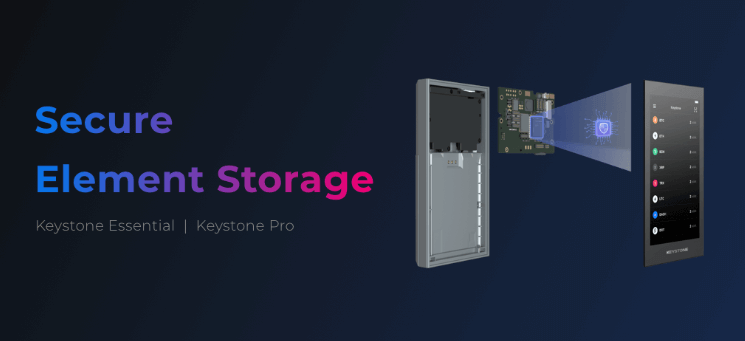
Fees and costs
Compared to higher-priced competitors like the Ledger Nano X and Trezor Model T, the Keystone option is cheaper with more functionalities.
The Keystone Essential comes at just $80, while the Pro version is priced reasonably at $129.
You can easily buy these wallets on the Keystone website. You can purchase it with fiat and crypto – use whatever works for you.
- PayPal
- Credit/debit cards
- Multiple Cryptocurrencies
Moreover, when I made my purchase, shipping was complimentary, taking 5 to 10 days. However, an express shipping choice (3 to 7 days) is available for those in a hurry for $25 extra.
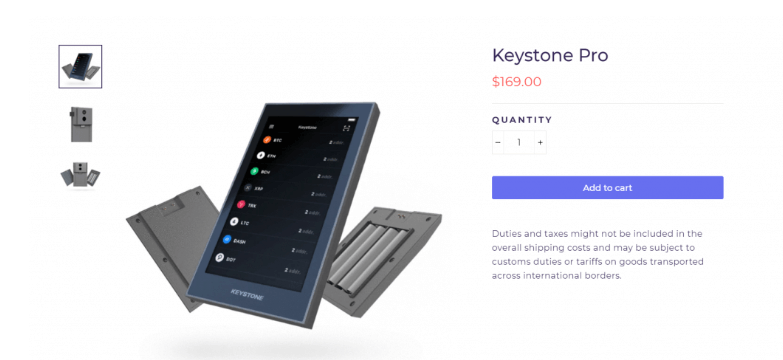
The difference between Keystone Essential & Keystone Pro
In my assessment, Keystone offers both Essential and Pro hardware wallets with distinct features and price points.
The Keystone Pro hardware wallet, priced higher than the Essential, justifies the difference with its enhanced features:
- A fingerprint scanner
- A rechargeable lithium battery pack
- A self-destruct mechanism
Despite the modest cost increase, these security and utility additions make the Pro version a worthwhile investment.
Moreover, the savings you gain by choosing the Keystone Pro can be wisely allocated toward the KeyStone Tablet, a sturdy metal wallet designed to store your seed phrase securely.
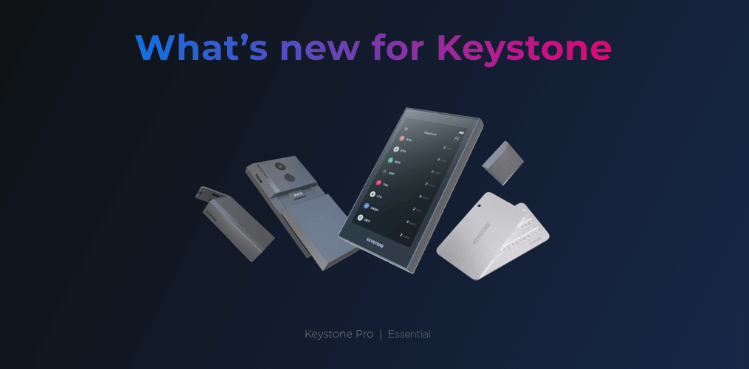
Drawbacks of Keystone Wallet
Let’s dive into the potential dealbreakers:
- No micro SD card included: The package doesn’t include a micro SD card for firmware updates. This means users must purchase one separately to ensure they can access different blockchains and enhance security.
- No gateway to buy cryptocurrencies: While Keystone excels at storing, sending, and receiving cryptocurrencies from other wallets, it needs the feature to purchase crypto from the device or the Keystone app directly. This is limited compared to alternatives like the Ledger Nano series, which offers convenient options for buying crypto through third-party vendors.
- Limited customer service: Keystone may have room to grow in customer service as a relatively new product in the market. Some users, including myself, have faced challenges reaching their customer support team and receiving timely responses, reflecting the need for potential improvements.
Keystone’s Alternatives
Trezor Model T
The Trezor Model T is considered a more reliable hardware device than Keystone among cryptocurrency investors. Despite a few reported MicroSD card slot issues, its ability to store 1500+ tokens and NFTs justifies its premium $219 price.


More details
The Trezor Model T is a high-quality hardware wallet that offers top-notch security for cryptocurrency investors. Trezor is known for its transparency and trustworthiness. The ability to store 1500+ tokens and Non-Fungible Tokens (NFTs) justifies the premium price of $219. However, some users have reported issues with the MicroSD card slot. Trezor Model T is a solid pick to safeguard crypto despite minor concerns.
-
It supports 1400+ crypto assets.
-
Touch screen for a user-friendly operation.
-
It supports NFTs storage.
-
Too expensive when compared to its competitors.
-
It has limited mobile compatibility.
-
A bulky design that is quite hard to carry around.
Ledger Nano S
Ledger Nano S is more budget-friendly than Keystone, costing $79. It is small and quite easy to carry. However, the setup and usability can be challenging for new users.
More details
Ledger Nano S Plus is a fortress-like protection for your digital wealth, sporting an affordable price point. This crypto wallet supports many cryptocurrencies and blockchain networks, making them easily managed via the reputable Ledger Live app. Despite its significant advantages, some users have noted the lack of storage capacity.
-
Support for up to 5,500 cryptocurrencies.
-
Private keys are always offline.
-
Integration with other hot wallets.
-
Support for staking.
-
NFT support.
-
High fees for Ledger Live crypto purchases.
-
Limited app space.
-
Small display.
Ngrave Zero
With support for 1,000+ tokens, Ngrave Zero is similar to Keystone but costly for some. It has an EAL7 certification that makes it safer than other cold wallets.
More details
Ngrave Wallet provides utmost security and a user-friendly experience. Its offline functionality, EAL7-certified OS, multi-crypto support, intuitive interface, and robust security make it a top choice for secure crypto asset management.
-
Advanced security features.
-
Interface with a 4-inch touchscreen.
-
Over 1000 cryptocurrency support.
-
Trusted certification (EAL7).
-
Limited support for decentralized finance (DeFi).
-
Higher price range compared to other wallets.
-
Lack of Bluetooth and NFC connectivity.
Keystone Wallet Review: Our Verdict
I’ve found Keystone to be an impressive hardware wallet that excels in security features and accessibility for all your cryptocurrency assets.
It supports major cryptocurrencies like Bitcoin, Ethereum, Ripple, and more, consolidating your holdings in one secure location. Compatibility for Android and iOS ensures you can manage your digital currencies seamlessly.
Keystone Pro is a dependable choice for cryptocurrency enthusiasts despite minor considerations, like the need for a separate micro SD card and limited customer service due to its relative newness.
Its robust features and cost-effectiveness make it a worthy consideration in your crypto journey.
Yes, Keystone Wallet is a secure hardware wallet and a legitimate choice for securing cryptocurrency assets.
Keystone Pro is an excellent choice, offering enhanced security features and utility, making it a valuable investment.
Keystone wallet securely stores your cryptocurrency assets offline, making it resistant to online threats. It features a range of security measures and compatibility with various cryptocurrencies.
Yes, Keystone can be considered a cold wallet as it operates offline, keeping your digital assets secure from online threats.
It has a wide range of products, including Keystone Tablet Punch.


